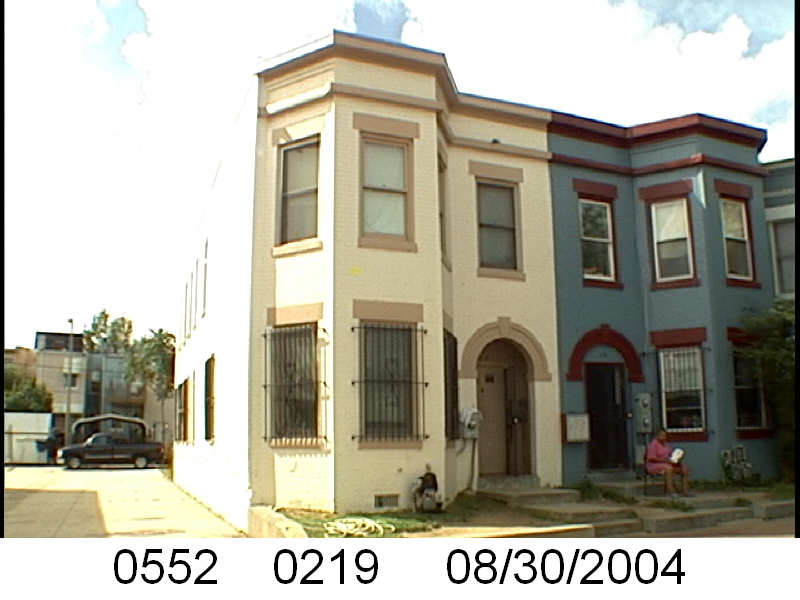This is a continuation of part 1. I search the Library of Congress’ Chronicling America site for newspaper articles about the Washington Sanitary Improvement Company (WSIC) and Truxton Circle. There will be more parts, most of it are auction sales when WSIC off loaded their properties in the mid-late 1950s.
Building Permits Issued– Evening star. [volume], September 10, 1901, Page 5. “Washington Sanitary Improvement Company, to build a two-story brick dwelling at 94 Bates street northwest; cost, $3,000.”
Building Permits Issued– Evening star. [volume], April 01, 1902, Page 2. “Washington Sanitary Improvement Company, to build eight two-story and cellar brick flats at 62 to 76 Bates street northwest; cost. $20,000.”
Real Estate Transfers– Evening star. [volume], December 19, 1916, Page 7.”NORTHWEST; BATES STREET between North Capitol and 1st streets northwest; 14 TO 42 O STREET NORTHWEST; HALF STREET between M and N streets southwest; 57 TO 81 L STREET NORTHEAST –George H. Harries and George M. Kober, surviving trustees of the Washington Sanitary Improvement Company, to Washington Loan and Trust Company, trustee, lots 170 to 182, Square 509; lots 33, 34 and part of lot 35, lots 49 to 79, 80 to 94, 98 to 150, square 552; lots 134 to 140, 170 to 179, 195 to 207, 236 to 256, 258 to 265. square 615; lots 169 to 183, square 617; lots 33 to 90, 92 to 120, 122, 123, 125 to 147, square 651; lots 415 to 427, square 674.”
John J. Edson Quits Bank Presidency-Declines Re-Election as Head of Washington Loan and Trust Company- John B. Larner Succeeds- Succeeded Mr. Warner– Evening star. [volume], January 10, 1917, Page 5 -“He has been treasurer of the Chamber of Commerce of the United States since its organization, of the Washington Sanitary Improvement Company, the National Geographic Society from 1901 to date; of the Associated Charities
from 1894, and was formerly treasurer of the George Washington University.
…….
For many years he has been chairman of the Summer Outing Committee for Children: and he was president and trustee of the National Homeopathic Hospital from 1889 to 1905.”
Total of $366,932 in D.C. Building– Evening star. [volume], March 01, 1930, Page B-3. “Washington Sanitary Improvement Co., owner; A. S. Johnson & Co., builders; to reroof, 200 to 230 and 201 to 229 Bates street (lots 132 to 147 and ‘ 80 to 94, square 552); to cost $1,500.”
Permits- Repair Work– Evening star. [volume], June 18, 1938, Page B-2. “Washington Sanitary Improvement Co., 915 F street N.W., owners; Edson & Bressler, Bond Building, builders; to erect brick garage, 121 Bates street N.W.; to cost $1,400.”
Auction Sales- Thos. J. Owen & Son– Evening star. [volume], June 10, 1953, Page C-16. Auction 220A Bates Street NW ($8000).
Auction Sales- Thos. J. Owen & Son – Evening star. [volume], April 19, 1954, Page B-11. Auction of 131 Bates Street NW ($7,750).
Auction Sales- Thos. J. Owen & Son– Evening star. [volume], June 08, 1954, Page B-17. Auction of 130 “Q” St NW ($15,000). 132 Q Street NW ($8,000).
Auction Sales- Thos. J. Owen & Son–Evening star. [volume], November 27, 1954, Page A-15. Auction of 200 Bates St NW ($8000) and 204 Bates St NW ($7,750).
Auction Sales- Thos. J. Owen & Son– Evening star. [volume], May 19, 1955, Page B-20. Auction of 214A Bates St NW ($7,750).
Auction Sales- Thos. J. Owen & Son– Evening star. [volume], July 01, 1955, Page B-9. Auction of 138 Que St NW ($8000), 69A Bates Street NW ($7,750) ; Evening star. [volume], July 06, 1955, Page C-5. Auction of 69A Bates Street NW ($7,750). 18 Que St NW ($8000).
Auction Sales- Thos. J. Owen & Son– Evening star. [volume], February 24, 1956, Page C-5. Auction of 229 P Street NW ($8000).
Auction Sales- Thos. J. Owen & Son– Evening star. [volume], April 21, 1956, Page A-14. 202 Bates Street NW ($7750).
Auction Sales- Thos. J. Owen & Son– Evening star. [volume], May 02, 1956, Page B-16. 1519 Third Street NW ($7750). 205 “P” Street NW ($8000).
Auction Sales- Thos. J. Owen & Son– Evening star. [volume], August 29, 1956, Page C-6. Auction of 139 Bates Street NW( $7,750), 55 Bates Street NW ($7,750), 34A Bates Street NW ($7,500).
Auction Sales- Thos. J. Owen & Son– Evening star. [volume], September 04, 1956, Page B-1. Auction of 139 Bates Street NW ($7,750), 55 Bates Street NW ($7750), 34 Bates Street NW ($7500).















